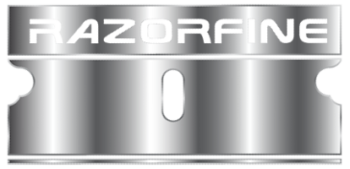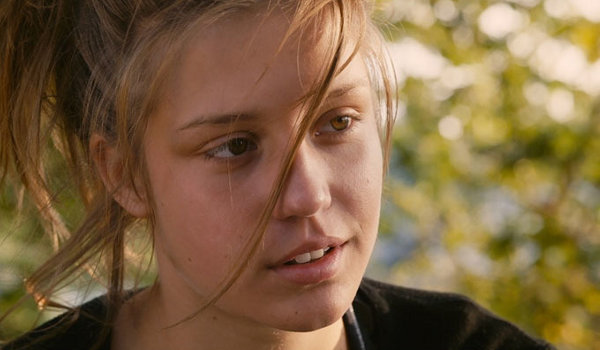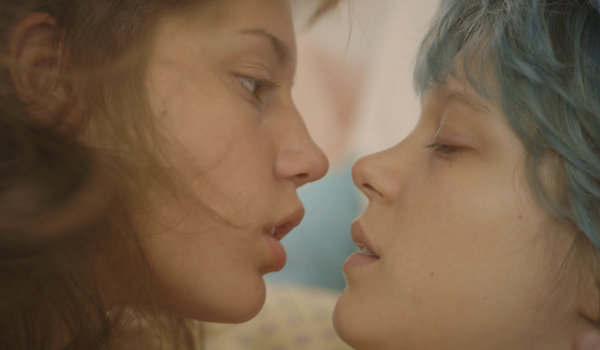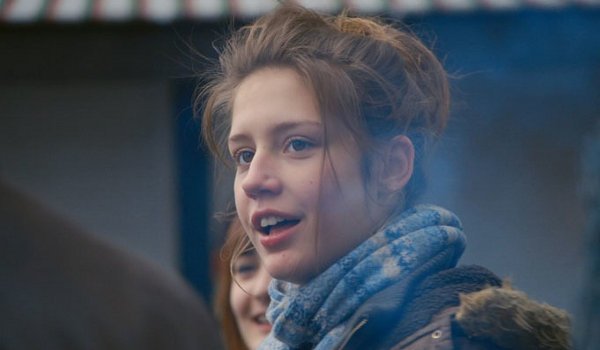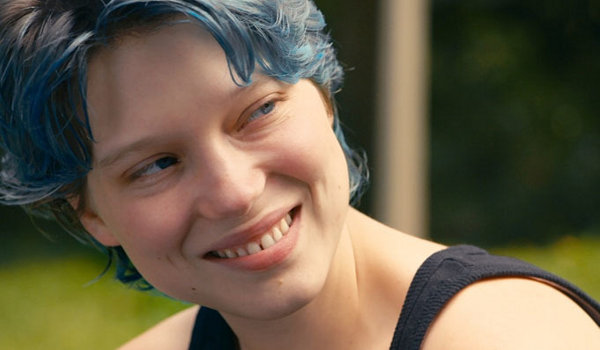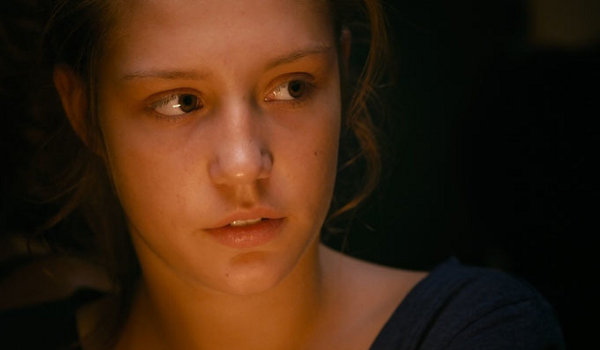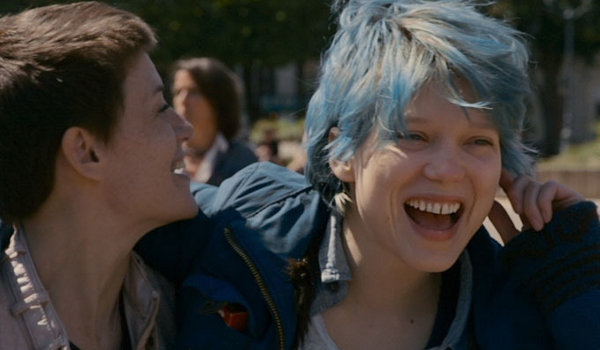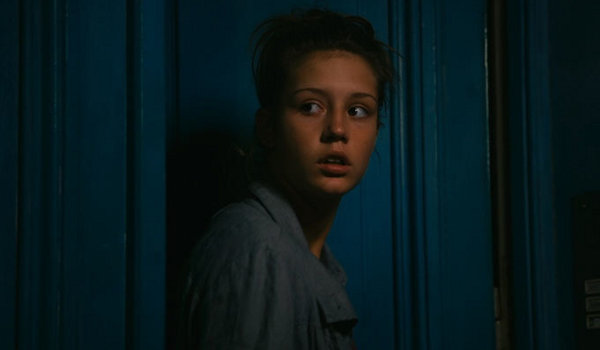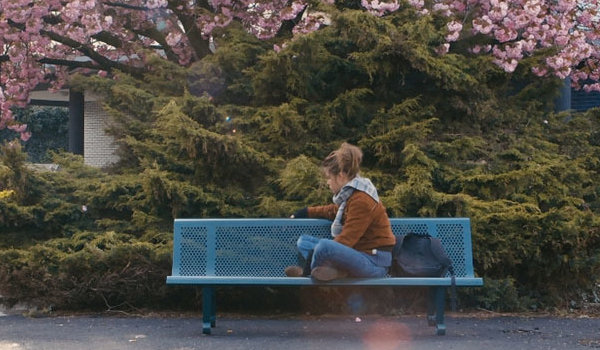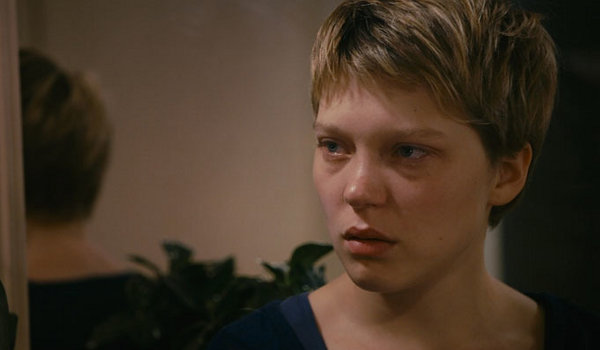- Title: La vie d’Adèle
- IMDB: link

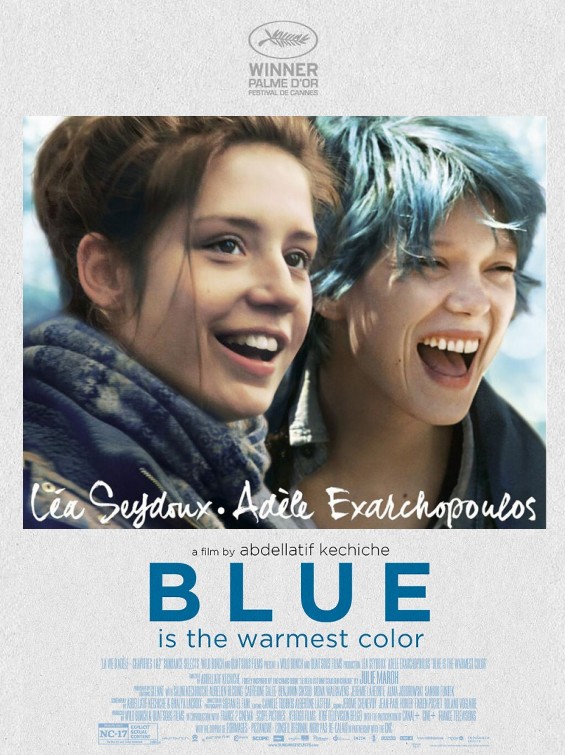 Adapted from the graphic novel by Julie Maroh by writer/director Abdellatif Kechiche, Blue is the Warmest Color examines the sexual awakening of a French secondary-school student and the journey her first lesbian relationship will lead her on over the next few years.
Adapted from the graphic novel by Julie Maroh by writer/director Abdellatif Kechiche, Blue is the Warmest Color examines the sexual awakening of a French secondary-school student and the journey her first lesbian relationship will lead her on over the next few years.
In its best moments Keciche’s film captures the perfect mix of emotions between the young Adèle (Adèle Exarchopoulos) and the more experienced Emma (Léa Seydoux) creating a completely believable and natural love story where passions run extremely high but whose differences lead to problems down the line.
The film doesn’t immediately start with Adèle and Emma. Instead we get Adèle’s attempt at a heterosexual relationship with a cute young classmate (Salim Kechiouche). Feeling something missing, Adèle journeys into a gay bar with friends where she meets Emma for the first time.
With the older Emma already in a relationship and Adèle very secretive and protective of her sexual orientation their relationship begins as a friendship and slow-burning affair between the two that eventually explodes in one of the film’s extended sex scenes that certainly earn the movie its NC-17 rating (and, sadly, also come off as the most obviously staged sequences). The nature of the scenes, how they are staged, their length, and their separation from any of the frank and honest storytelling methods seen in nearly every other frame of the movie, borders on pornography. The attempt to make Adèle and Emma’s love-making passionate and insatiable certainly works, but in these sequences the movie also comes dangerously close to loosing its heart.
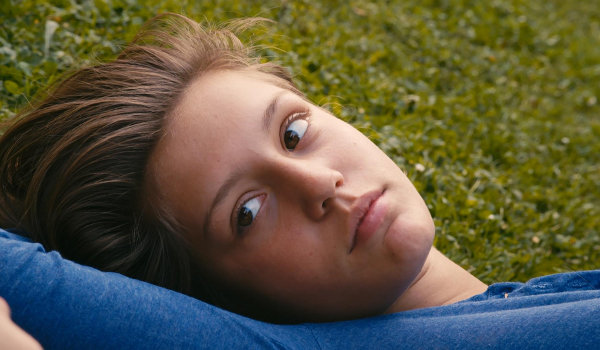
Divided into two chapters, the Blue is the Warmest Color really is two separate stories. The first involves Adèle’s sexual awakening and her burgeoning relationship with Emma. The second-half of the story involves the boredom of everyday life leading to the eventual break-up of the young lovers and its fallout. Either story would work well on its own. At three-hours Kechiche pushes the limits of how far he can take these characters in a single film without loosing the audience’s attention.
Exarchopoulos is terrific as Adèle whose passions, faults, fears, and desires drive the entire film. Adèle is never simplified for the story’s sake. Her decisions are messy and often have serious consequences. She’s secretive in terms of refusing to tell her parents or co-workers about her true relationship with Emma and uncomfortable among her girlfriend’s more philosophical art friends whom she never seems to quite fit in with. Seydoux has the easier role but the two actresses play well off one another to craft a touching love story.
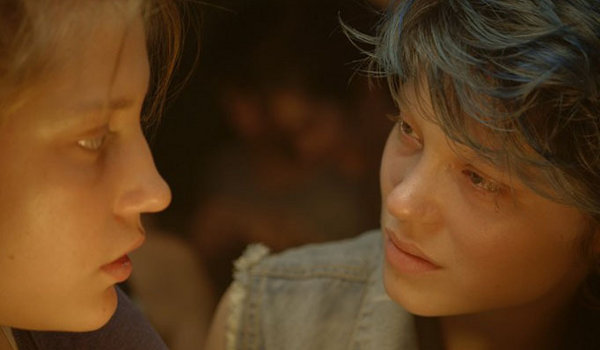
Those not put off by the film’s extended sex scenes should definitely consider seeking it out (although to do so you are likely going to have to head to art houses or wait for On-Demand or home video options). Even with its daunting 179-minute running time, Blue is the Warmest Color never grows stale and continues to deliver on its character-driven tale all the way through its final scene.
Leading with its heart, much like its lead character, Blue is the Warmest Color is passionate, heartbreaking, romantic, messy, and all-encompassing (as the best love stories must be). Both Exarchopoulos and Seydoux’s performances are worthy of notice as is the emotionally-packed story of a first great love affair that would change both young women’s lives. My quibbles with the film and how it handles the physical relationship of Adèle and Emma are minor compared to how exceptionally well it handles their emotional relationship. In doing so, Kechiche has crafted one of the best, and most memorable, movies of 2013.
